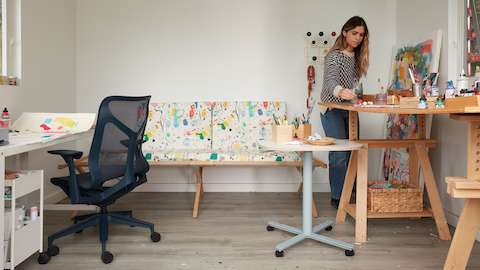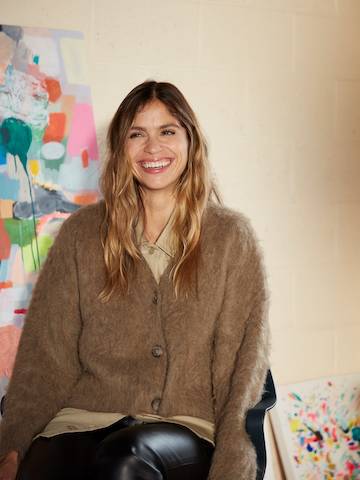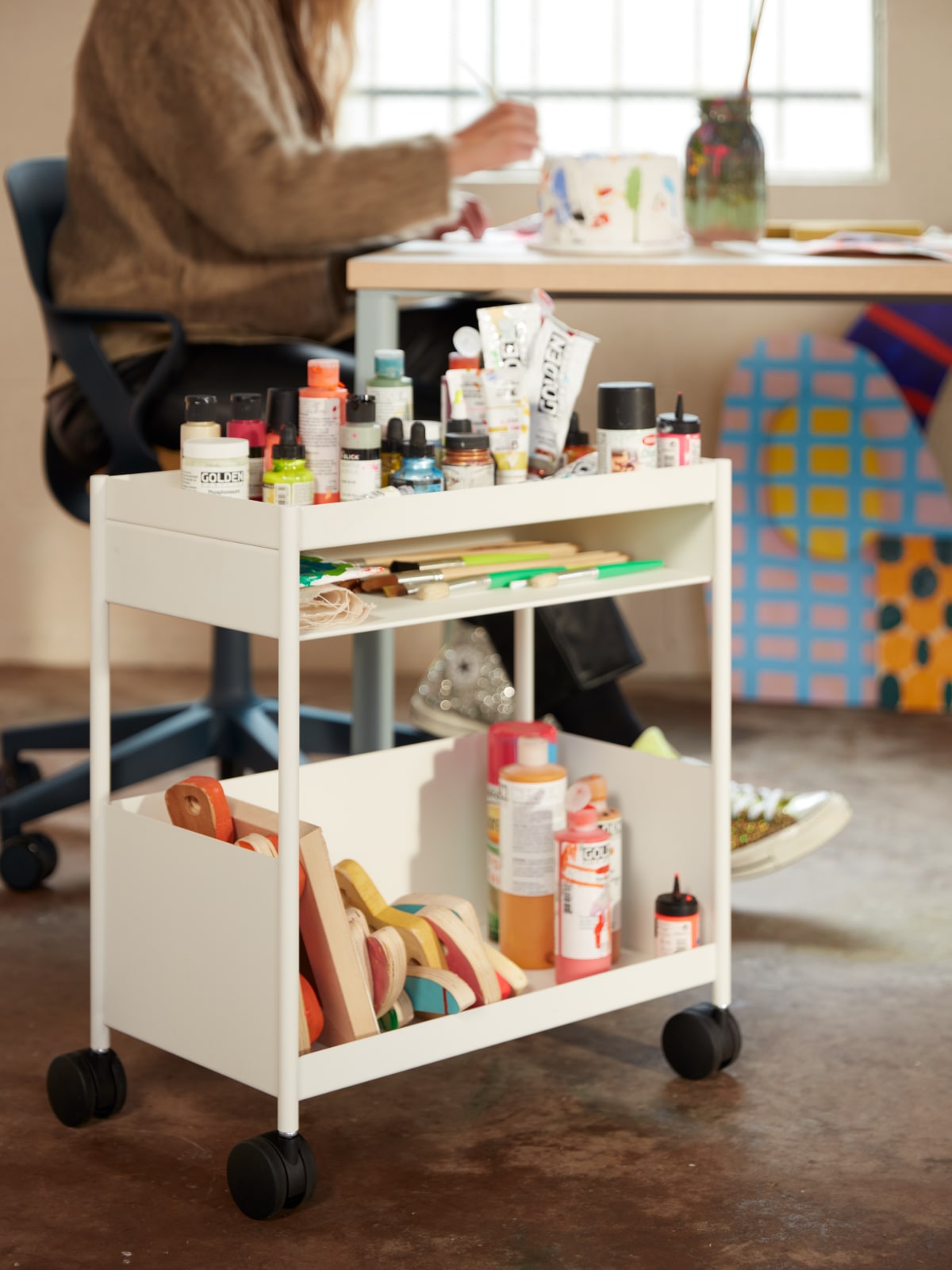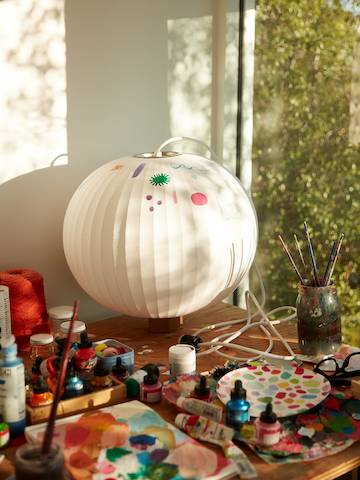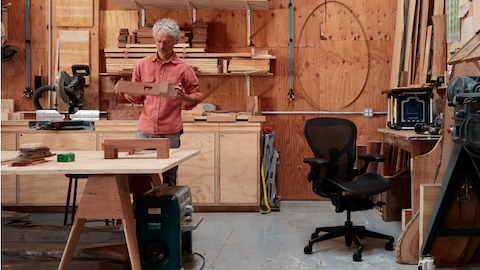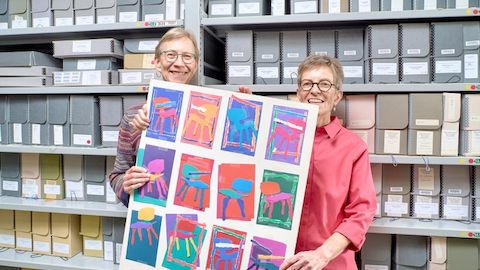Kindah Khalidy moved into her Berkeley, California, studio not long after designing a bottle label for the distillery next door. She needed a place for larger paintings—her home studio is quite small—and the distillery had an empty office. With whitewashed walls opening onto an empty gravel yard, it’s a minimalist antithesis to Khalidy’s bubbling, colorful, multi-textured canvases. That is the point.
“I needed space to move them around,” she says. “Or take some from home and bring them here.”
Khalidy’s paintings—often five or six feet wide—take time, and changes in perspective are part of the process. Sometimes that means sitting and staring; sometimes it means moving a canvas to a different wall. Over the months (sometimes years) of development on a single piece, other paintings are born and grow. “Within each painting there are thousands of versions of it, different ways it can go,” she says. That makes it easy to start, but hard to know when to finish. “It’s hard but you have to find the place where you feel okay just letting it go. You have to keep it moving.”
Khalidy doesn’t abide by a precious secret system, all pondering and patience. In fact, her real work is removing those calculated frameworks. “I try not to pre-plan anything,” she says. “I’m trying to get better at drawing—better at lines—so I don’t have to sketch at all. I’m not against sketching, but I enjoy the challenge of working without it.”
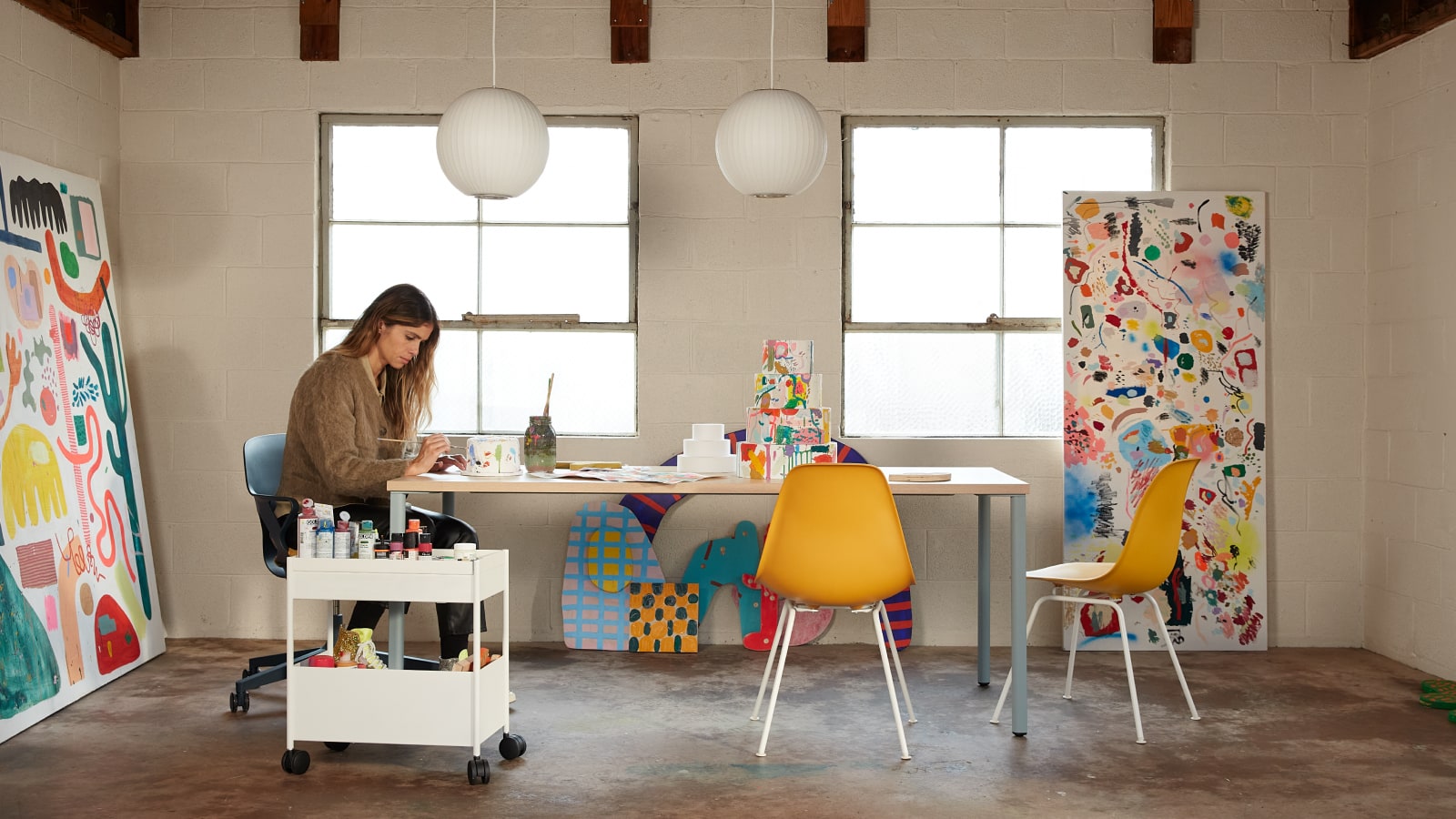
Canvases line the walls of the bright, spare studio, a painted dress hangs from the rafters, and a pile of fabrics, still in their plastic vac-packs, sits on a worktable. Her aesthetic—“a balance of color and negative space; awkward, unnatural feelings or shapes with flat, safe ones”—lends itself to fashion, where its energy enlivens staples from toddler clothes to skateboard shoes. Khalidy has her own textile line called Seamripper, and collaborates with companies like Vans. “It’s fun seeing the paintings come to life with movement,” she says, adding that fashion is the way we express ourselves. “We have conversations with our clothing, and our clothing has conversations with other people.”
But working on products isn’t as simple as draping a canvas over a dress form. “There are restrictions when you paint objects,” Khalidy says. “Obviously, you have to adjust to their form, paying attention to how the paint drips, or how the pattern falls on a collar or a sleeve. But when it’s a product, I want to make sure it’ll look good reproduced forever. That’s hard—you lose some of the magic when it becomes so intentional.”
“Within each painting there are
thousands of versions of it,
different ways it can go.”
One particular velvet print started as a paper collage, layered and painted to look like fish scales, then photographed and repeated. For another, “I grabbed shapes from 10 or 15 paintings and made the repeat myself,” Khalidy explains. “Like, this gold blob was from here,” she says, pointing from the bolt of fabric to a print of one of her paintings leaning against the opposite wall. “I have rules of what becomes a product and what becomes fine art, rules about what I use for patterns. I need to keep some things sacred,” she says. “When I make a pattern and am choosing which blobs are going to be a part of it, I’ll have my own conversation with the painting. Some shapes are too special—I wouldn’t put them on a pattern. Some blobs just have to live on the canvas.”
Khalidy recently started decorating cakes for her gallery show openings—“they make edible paint, even edible spray paint”—and a few ghost-white, fake foam cake shapes dot the shelves around her studio, ready for color. Paper lanterns flecked with colored whorls and squiggles, like glowing petri dishes, hang from the rafters.
“I love painting on paper,” she says about the lanterns, “and this one [the Nelson Bubble pendant] is really cool. It feels like paper, but it’s actually a kind of plastic they weave like artificial spiderwebs.” A few drips curve down the translucent polymer shade. That’s okay. “I like leaving some here and there, a mix of accidental and intentional,” Khalidy continues.
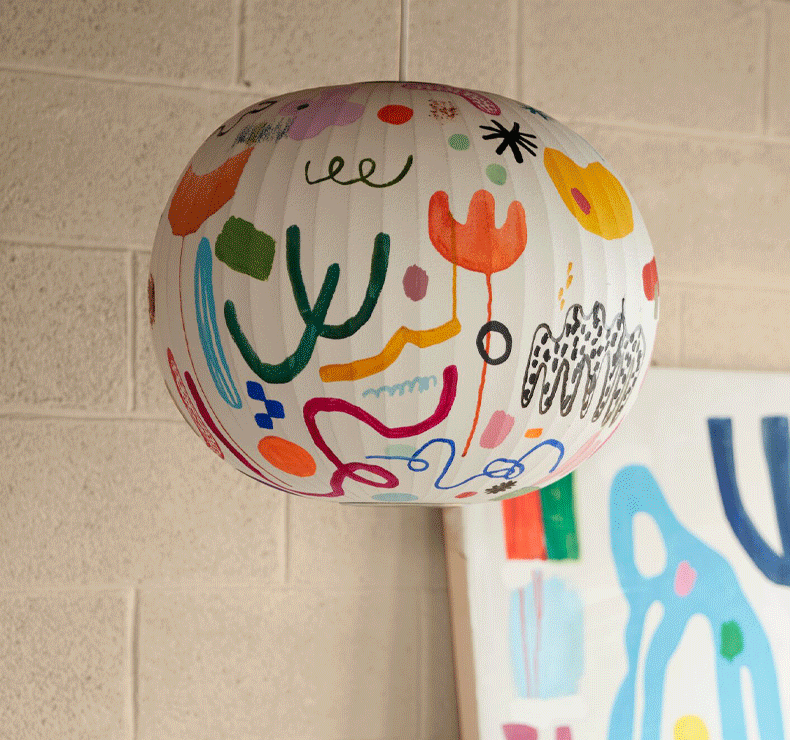
“We have conversations with our clothing, and our clothing has conversations with other people.”
Her buzzing studio feels a bit like one of Khalidy’s canvases, and a bit like how she works: moments of free expression set against the clear breath of rest. So who is Khalidy in this array? Another iridescent form, gesturing along the page? “No, I have to balance it out. Look at what I wear: It’s so simple. I’d never wear my own fabrics. That’d be too much!”
